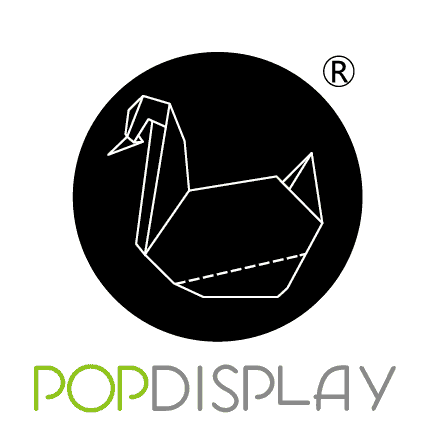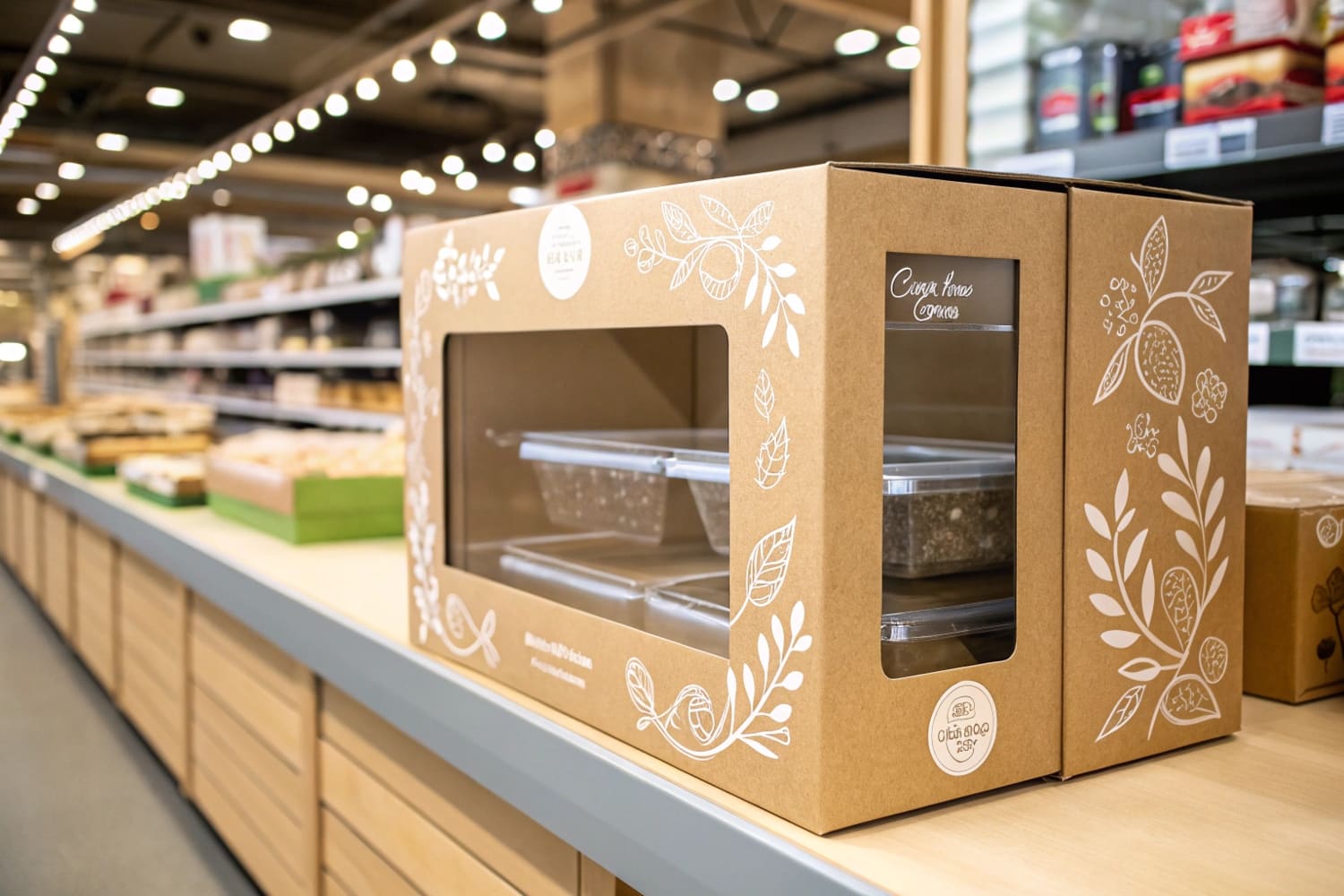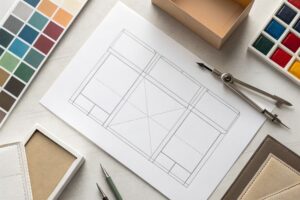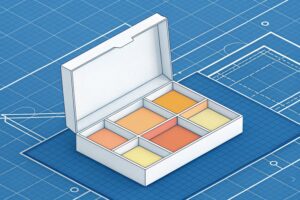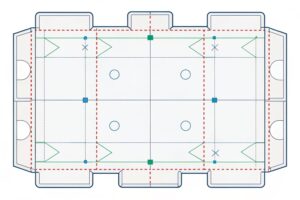I see buyers face shelf clutter, tight budgets, and fast launch cycles. I feel that pressure each season. I use simple rules to choose the right Kraft display box fast.
Yes. Kraft display boxes come in many styles, such as countertop boxes, hanger boxes, mailer-style PDQ trays, tuck-top cartons, windowed cartons, and corrugated floor-ready shippers, with custom sizes, print, coatings, inserts, and closures.

I sell cardboard displays to brands with strict timelines. I design with clear goals first. I pick structure by product weight, speed of setup, and look. I keep print simple and bold for fast impact.
Are there different types of kraft paper?
Many teams assume “kraft” is one thing. Then samples arrive and colors, strength, and stiffness do not match. I explain the types early. I send touchable swatches. That saves time and avoids rework.
Yes. Kraft paper varies by fiber source, bleaching, color, basis weight, and finish. Common types include natural unbleached (brown), white bleached, recycled kraft, food-grade kraft, and high-strength sack kraft, each chosen for print needs and strength.
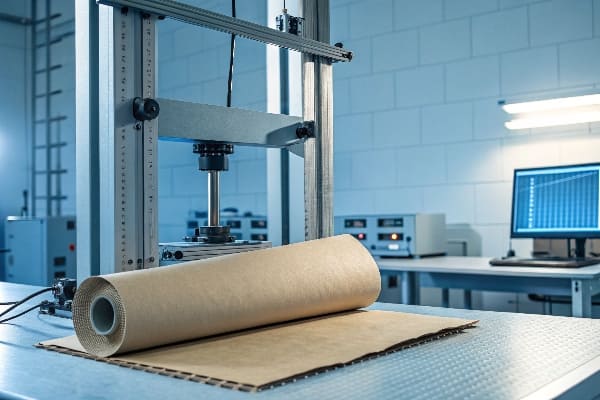
How I break down kraft choices1
I group kraft by three simple signals: color, strength, and print quality. Natural brown looks warm and eco. White looks clean and premium. Recycled lowers cost and footprint but may show more fiber specks. Sack kraft has long fibers for tear strength. Food-grade follows contact rules. I match basis weight to product mass and to the span of the panel. Thin paper wraps well but shows board texture. Heavier paper prints flatter solids. When a client wants heavy ink coverage on brown kraft, I warn them about dot gain and color shift2. I use under-print white where needed.
A quick comparison table
| Type | Look | Typical Use | Pros | Watch-outs |
|---|---|---|---|---|
| Natural brown | Rustic, eco | Outdoor, tools, organics | Strong fiber, low glare | Dark base shifts colors |
| White bleached | Clean, bright | Beauty, tech | Crisp print, sharp images | Shows scuffs; higher cost |
| Recycled kraft | Earthy, speckled | Value brands | Lower footprint, cost | Variable tone; strength varies |
| Sack kraft | Tough | Heavy packs, handles | High tear strength | Limited print finesse |
| Food-grade | Regulated | Food contact | Compliance | Supplier documentation needed |
A short story from my shop
Last fall, a hunting brand asked for a rugged look for broadhead accessories. I sampled brown kraft with a matte water-based varnish. Their red logo dulled. I added an opaque white plate under the logo area. The color popped, and the earthy look stayed. We met the launch window.
What is the difference between kraft and cardboard?
I hear this question in almost every briefing call. Teams mix terms and then pick the wrong spec. I explain the stack of materials first. That changes the conversation and speeds approval.
Kraft is a type of paper made by the kraft pulping process; cardboard is a general term for thick paper materials like paperboard or corrugated board. Kraft can be a liner or wrap on cardboard structures.
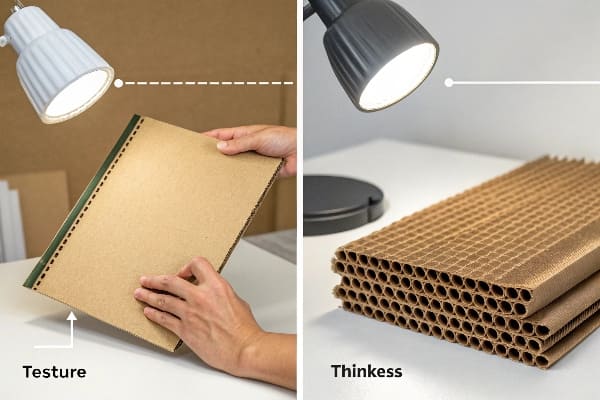
Plain words, clear layers
Kraft is the paper sheet. Cardboard is the built material. When I build a display box, I usually start with corrugated board. It has a fluted core and two liners. Those liners can be kraft (brown or white) or coated sheets. For small boxes, I may use solid paperboard (folding carton). In both cases, kraft often forms the outer face that you see and print on. So “kraft box3” usually means a box with a kraft outer liner or wrap. It does not tell you the internal structure or strength.
Structure and use table
| Material | What it is | Typical thickness | Best for | Notes |
|---|---|---|---|---|
| Kraft paper | Paper liner or wrap | 40–200 gsm | Wraps, labels, liners | Comes brown or white; can be recycled content |
| Paperboard (Folding carton) | Solid board | 250–600 gsm | Light retail boxes | Smooth print; not for heavy loads |
| Corrugated cardboard | Flute + liners | 1–7 mm | Shippers, PDQ trays, floor-ready | Choose E, B, C flutes; kraft liners boost strength |
Why this matters in real orders
A buyer once asked for “thick kraft boxes” for compound bow accessories. The first sample used heavy paperboard with brown print. It looked right but crushed in transit. We switched to B-flute corrugated with brown kraft liners. We kept the look and gained stacking strength. The reorder rate tripled because stores could cross-stack on pallets without collapse.
What are kraft boxes?
Some clients think kraft boxes are only brown mailers. I show them options in minutes. We line up styles on a table and pick by use case, not by habit.
Kraft boxes are retail or shipper boxes that use kraft paper on the surface. They include tuck-top cartons, mailers, sleeve boxes, window boxes, PDQ trays, and corrugated shippers with kraft liners.
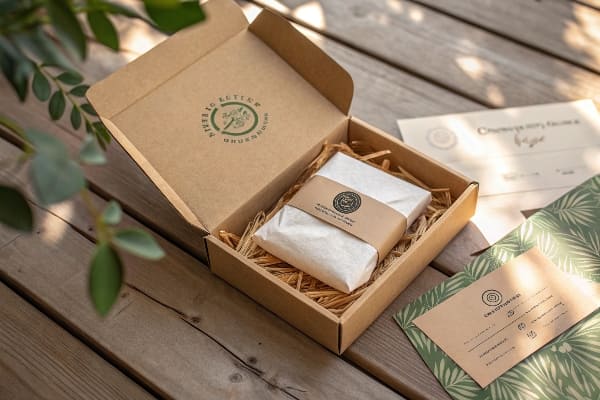
Common styles I produce
I group kraft boxes by where they sit and how they open. Counter boxes live near cash wraps. They often use E-flute with a perforated tear-off lid that becomes a header. Mailer boxes protect direct-to-store shipments and double as display trays. Tuck-top cartons handle light items and stack well in planograms. Sleeve boxes slide open and add a premium unboxing feel without plastic. Window boxes show color and texture of the product through a PET-free paper window or a cutout.
Style selection table
| Style | Where it sits | Typical board | Setup speed | Strength |
|---|---|---|---|---|
| Counter PDQ tray | Checkout or shelf | E-flute corrugated4 | Very fast | Medium |
| Mailer/shipper-display | Backroom to shelf | B-flute corrugated | Fast | High |
| Tuck-top folding carton | Dedicated shelf | 400–600 gsm board | Fast | Low–Medium |
| Sleeve + inner tray | Boutique shelf | E-flute or board | Medium | Medium |
| Windowed carton | Planogram shelf | Board with cutout | Fast | Low–Medium |
A field example from my factory
For a crossbow accessory launch, I proposed a kraft mailer5 that tears into a counter display. The store staff opened a zip strip and folded two panels. No tools. The box kept the rugged look. I added a die-cut riser for a hero logo and a QR code for a range-test video. Sell-through beat the old plastic peg packs by week two. The buyer sent a reorder with only art changes, which kept our costs low and margins healthy.
Are kraft boxes eco-friendly?
People want clear answers here. I give the facts I can control. I show certificates. I explain coatings and inks. I keep claims simple and true.
Often yes. Kraft boxes are usually recyclable and can use recycled fibers. Eco impact depends on fiber source, coatings, inks, and supply chain. Choose water-based inks, recyclable coatings, and verified fiber to maximize sustainability.
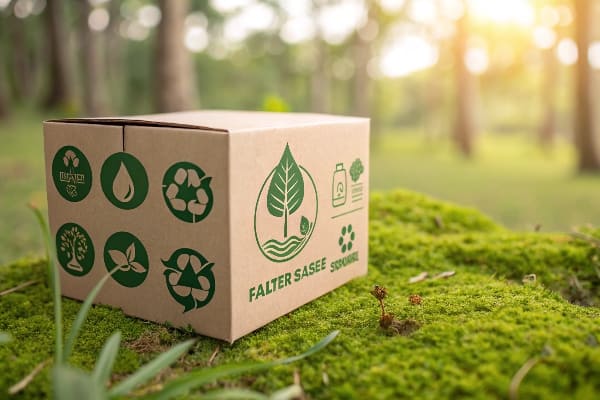
What makes a kraft box greener
A kraft look does not guarantee a green box. I select verified fiber where possible. I use water-based inks6 and adhesives. I avoid plastic lamination unless needed for moisture. If a client needs more scuff resistance, I choose a water-based varnish or a recyclable barrier instead of film lamination. I design flat-pack forms7 to reduce freight emissions and warehouse space. I print fewer colors with large solids to lower ink use. I also standardize dielines across sizes so we can share tooling and reduce waste.
Practical checklist table
| Factor | Better choice | Why it helps | Trade-off |
|---|---|---|---|
| Fiber | Recycled + certified virgin mix | Strength + lower footprint | Color may vary |
| Ink | Water-based | Low VOC, easy to recycle | Slightly longer dry time |
| Coating | Water-based varnish | Recyclable stream | Less glossy |
| Lamination | None or paper-only | No plastic layer | Lower scuff resistance |
| Design | Flat-pack, modular | Lower freight and waste | More planning up front |
A quick story about claims and reality
A retailer once asked for “100% eco” boxes for outdoor knives. The first spec had a plastic window and glossy film lamination. The claim did not match. I rebuilt the box with a kraft cutout window, water-based inks, and a tear-strip design that eliminated tape. I added a simple recycling icon and a short disposal message. The brand dropped costs and improved the shelf story. Returns fell because the new structure held the blade sheath tighter in transit.
Conclusion
Kraft display boxes come in many styles. I match paper type, structure, and finish to the product and the story. I keep specs honest, print clear, and setup fast to hit launch dates.
Explore this link to understand the nuances of kraft selection, ensuring your packaging meets both aesthetic and functional needs. ↩
Learn about dot gain and color shift to enhance your printing quality and achieve the desired visual impact on kraft materials. ↩
Explore this link to understand the versatility and applications of kraft boxes in packaging. ↩
Learn about E-flute corrugated’s lightweight yet sturdy properties, making it ideal for various packaging needs. ↩
Explore the advantages of kraft mailer boxes, including sustainability and cost-effectiveness, to enhance your packaging strategy. ↩
Explore the advantages of water-based inks, including their eco-friendliness and recyclability, which can enhance your packaging sustainability. ↩
Learn how flat-pack designs can significantly lower freight emissions and waste, making your packaging more sustainable and cost-effective. ↩
